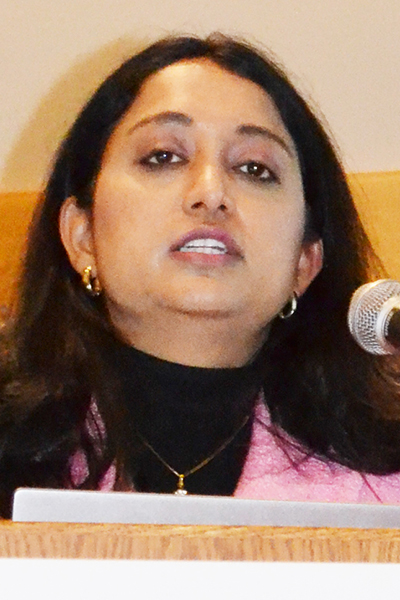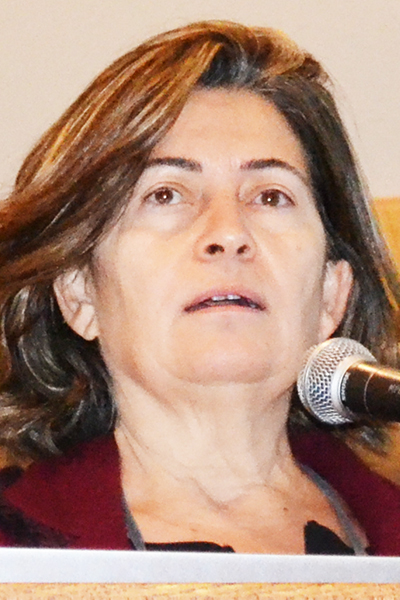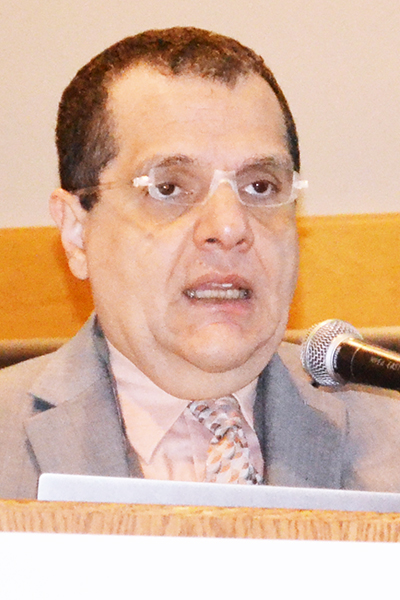For decades, researchers have observed gender disparities in sleep disordered breathing, and studies have further delineated sex-specific differences that impact the practice of sleep medicine—including reported daytime sleepiness, the role of airway length, and categorizations of mild, moderate, and severe OSA diagnoses.
On Monday, October 20, in Chicago, specialists gathered during the CHEST 2025 session Deconstructing Sex-Specific Variables in Diagnosis and Treatment of Sleep Disorders to review the epidemiologic and pathophysiologic distinctions of OSA in women, understand the implications of these differences for clinical practice, and examine how they manifest in specific instances of pregnancy and restless leg syndrome.

“Age and hormonal profile of patients are one of the key indicators” for OSA in women, said Session Chair Ashesha Mechineni, MD. She explained that the prevalence of OSA among women rises with age, particularly in the postmenopausal stage associated with age 50 and above.
“We have to keep these features in mind when using tools to screen and diagnose patients,” Dr. Mechineni said, noting that women with OSA may present with nonspecific or atypical symptoms that conventional screening questionnaires may have limited sensitivity in identifying and can obscure diagnosis.

A failure to recognize the unique needs and preferences of female patients with OSA can hinder effective care, said Anita Rajagopal, MD, FCCP, Department Medical Director of the Sleep Medicine Community Health Network.
Women tend to have lower adherence rates to CPAP therapy, Dr. Rajagopal said. She examined some of the reasons behind this, including default-gender bias in CPAP machine algorithms that adjust factors such as air pressure, the aesthetics of the machine, and possible decreased effectiveness of CPAP machines in resolving OSA issues more common among women, such as insomnia or fatigue.
Dr. Rajagopal recommended that clinicians consider a range of alternative treatment methods—from oral appliances and positional therapy to hypoglossal nerve stimulation or surgery—based on a patient’s individual needs. She said tailored management strategies are also crucial for early detection and cardiovascular disease prevention, specifically for female patients with sleep apnea syndrome.
Dr. Rajagopal detailed a tailored clinical approach for women that includes screening for nonclassic symptoms, addressing insomnia, monitoring cardiovascular health and mood-related outcomes, and educating about adherence benefits. She added that OSA care for women should also be viewed as part of a multidisciplinary approach with a team that includes mental health professionals, cardiologists, and OB/GYNs, particularly for perimenopausal or pregnant women.

Ghada Bourjeily, MD, FCCP, Professor of Medicine and Professor of Health Sciences, Policy, and Practice at Brown University, said that treating pregnant patients with OSA is a particularly crucial aspect of long-term health care because of an association between sleep-disordered breathing during pregnancy and congenital anomalies.
Dr. Bourjeily and her teams have focused on examining how physical and hormonal changes during pregnancy might affect sleep-disordered breathing and how severe cases can be identified.
“Not only is it impacting the mom’s health, at a given point, it is also impacting the health of the next generation,” she said.

Pregnancy can also be impacted by restless leg syndrome, which studies have shown to have a connection with sleep apnea among women, said Hrayr Attarian, MD, Professor of Neurology at Northwestern University Feinberg School of Medicine.
Dr. Attarian noted several studies of women exploring the connection between this sleep disruption and menopause, Vitamin D intake, oral contraceptives, and long COVID. Much remains unknown, including the prevalence of restless leg syndrome among women across age groups.
Looking to the future, Dr. Mechineni added that sex-specific analytical thresholds should be incorporated when interpretating sleep data and that future clinical trials and sleep studies should include equitable representation of women. Speaking to clinical approaches in treating women for OSA, Dr. Mechineni said, “We must adopt a targeted approach and have a tailored viewpoint when trying to identify the pheno-endotyping among patients. Understanding the underlying mechanisms is very important in finding the right course for the patient among increasing options for diagnosis and treatment.”

Call for Topics Is Open
Feeling inspired by all the great sessions in Chicago? Help shape the curriculum for CHEST 2026, October 18 to 21 in Phoenix, by submitting topic ideas from areas you’re passionate about, topics affecting your practice, or new technologies you’d like to learn more about. The submission deadline is Tuesday, December 2, at 2 pm CT.


